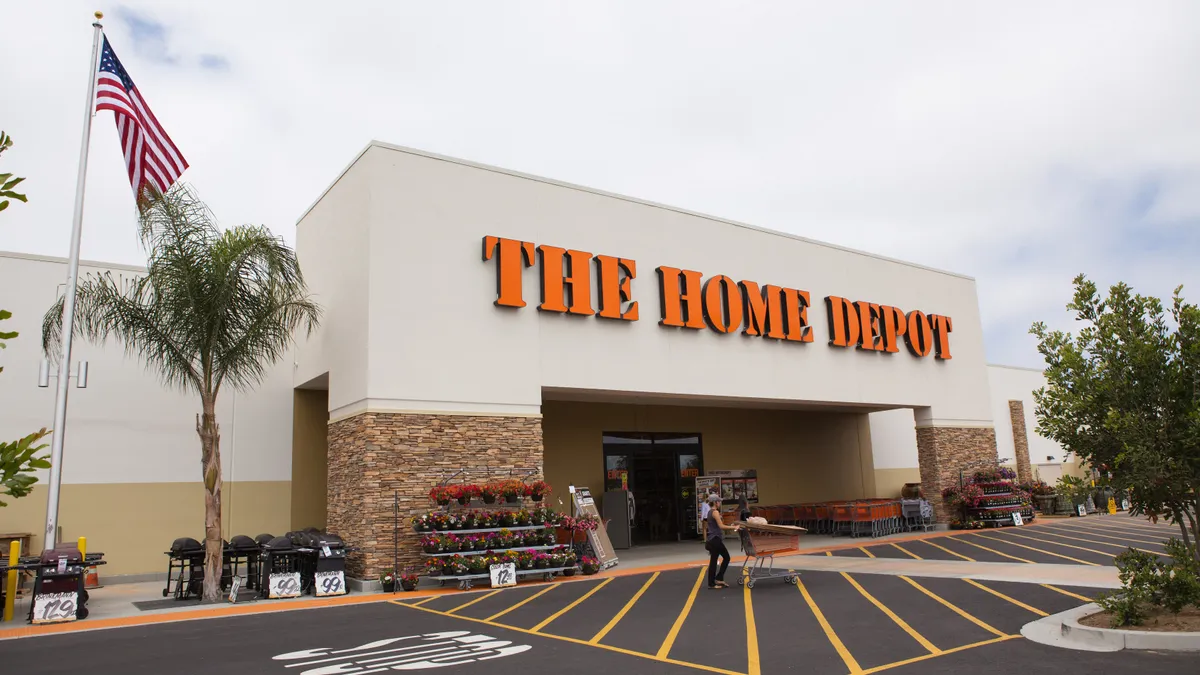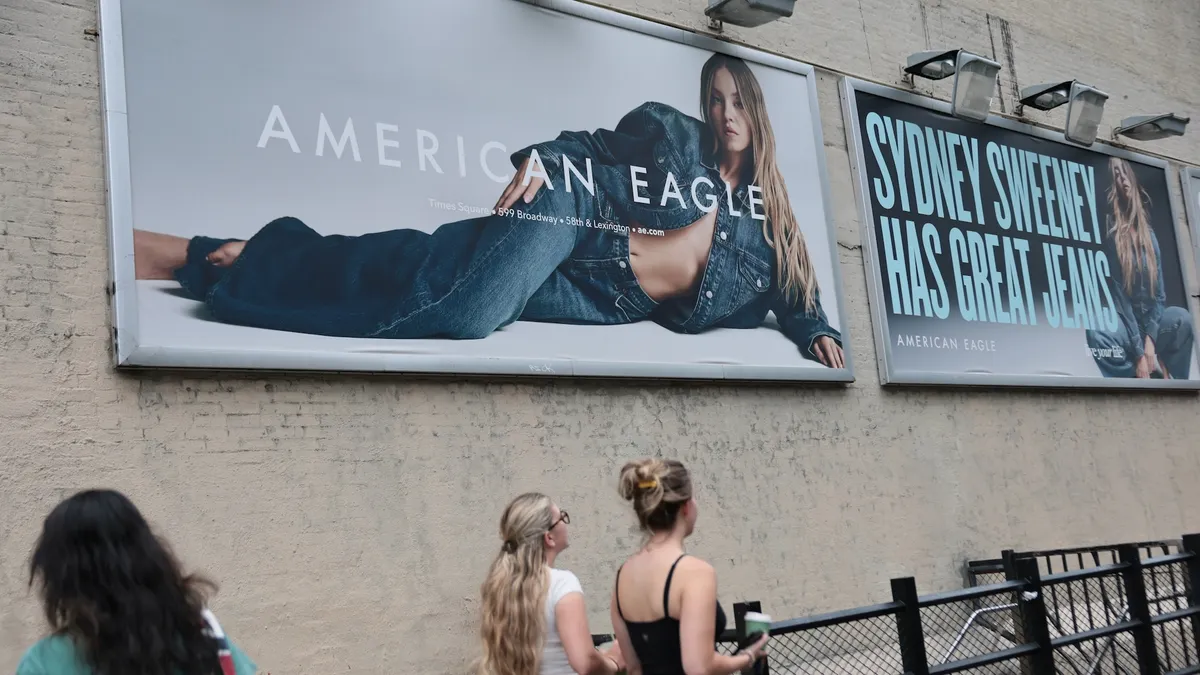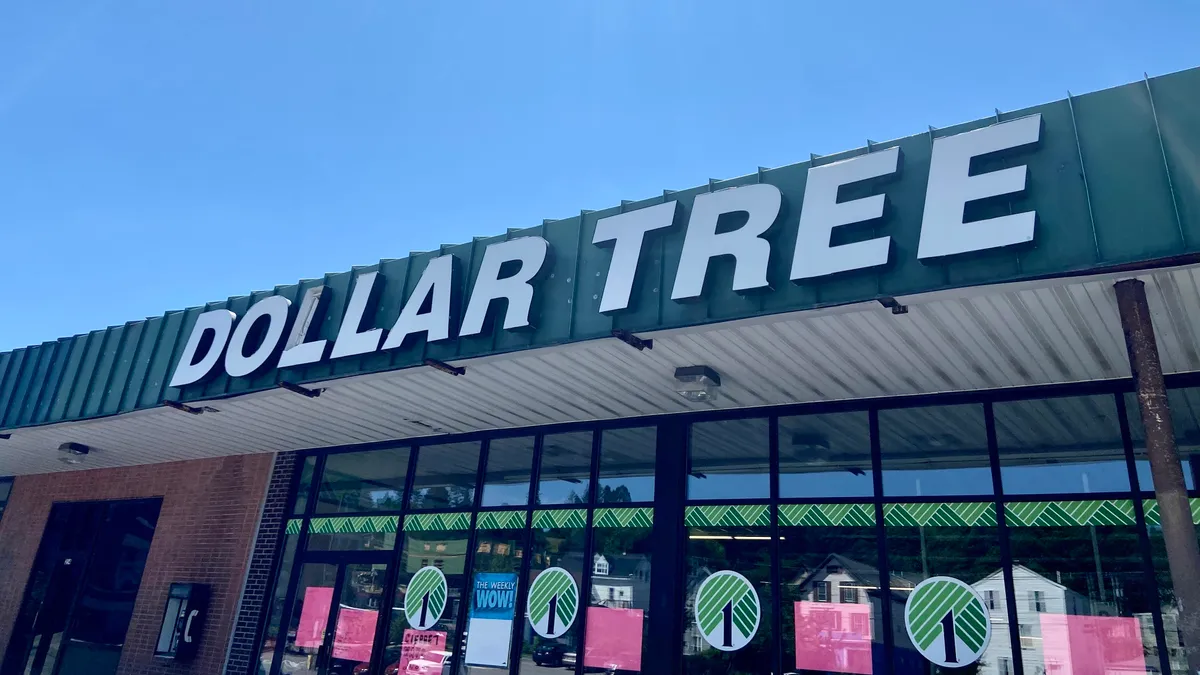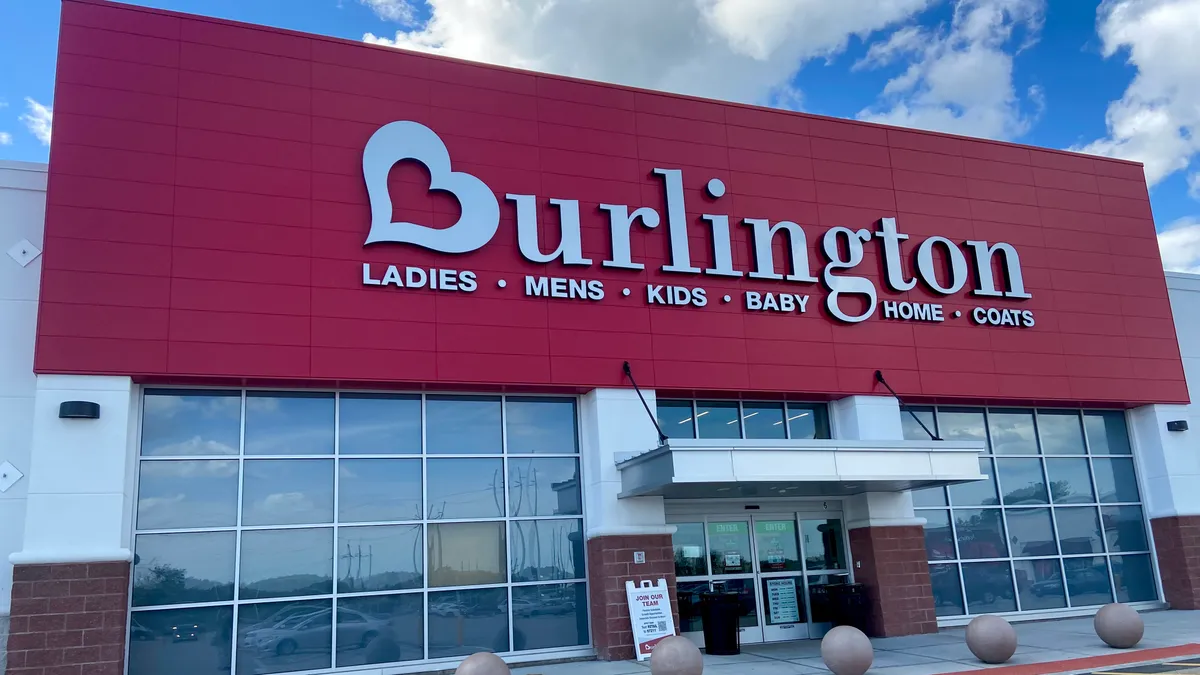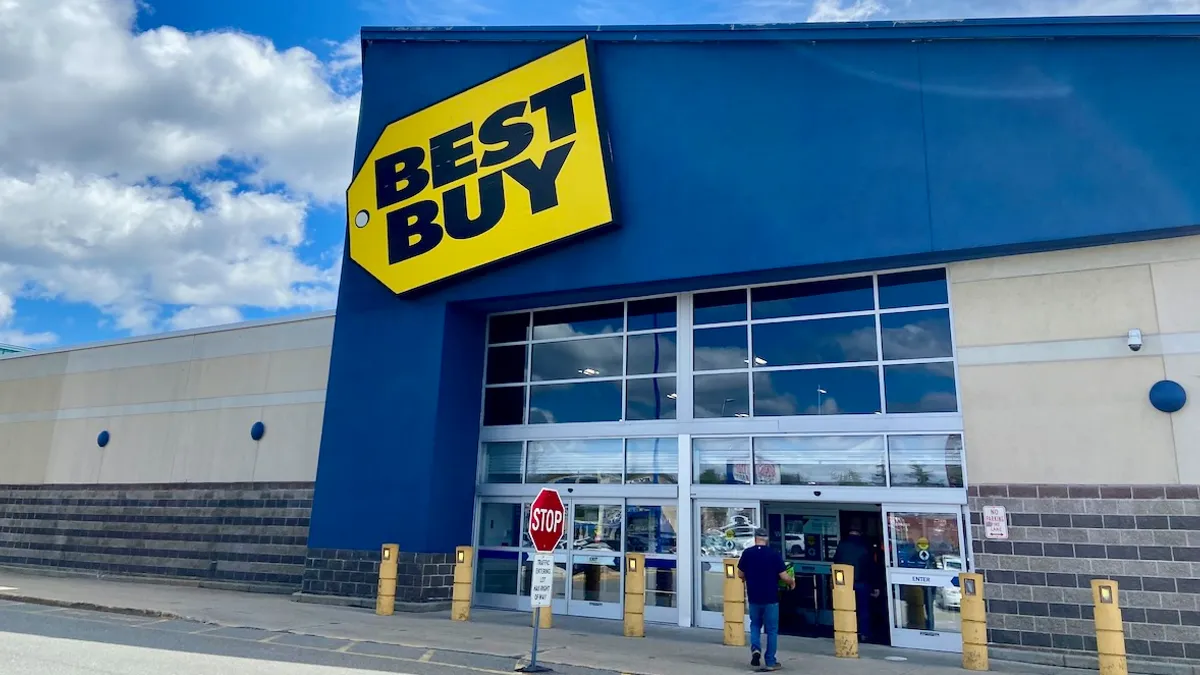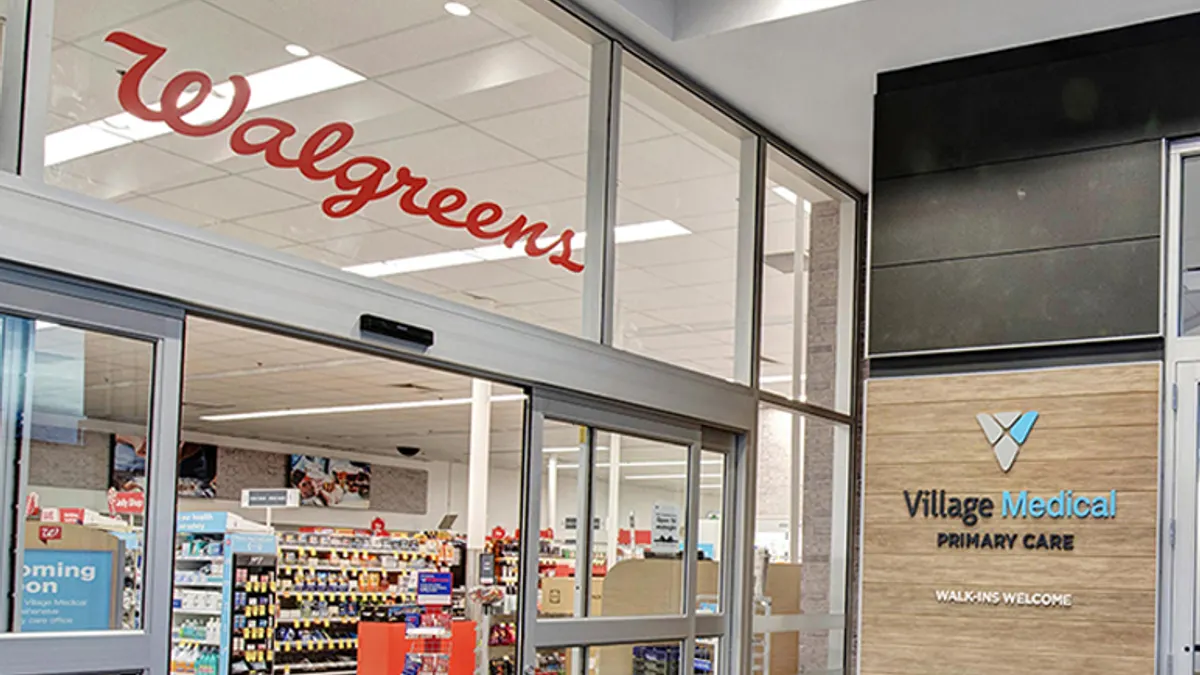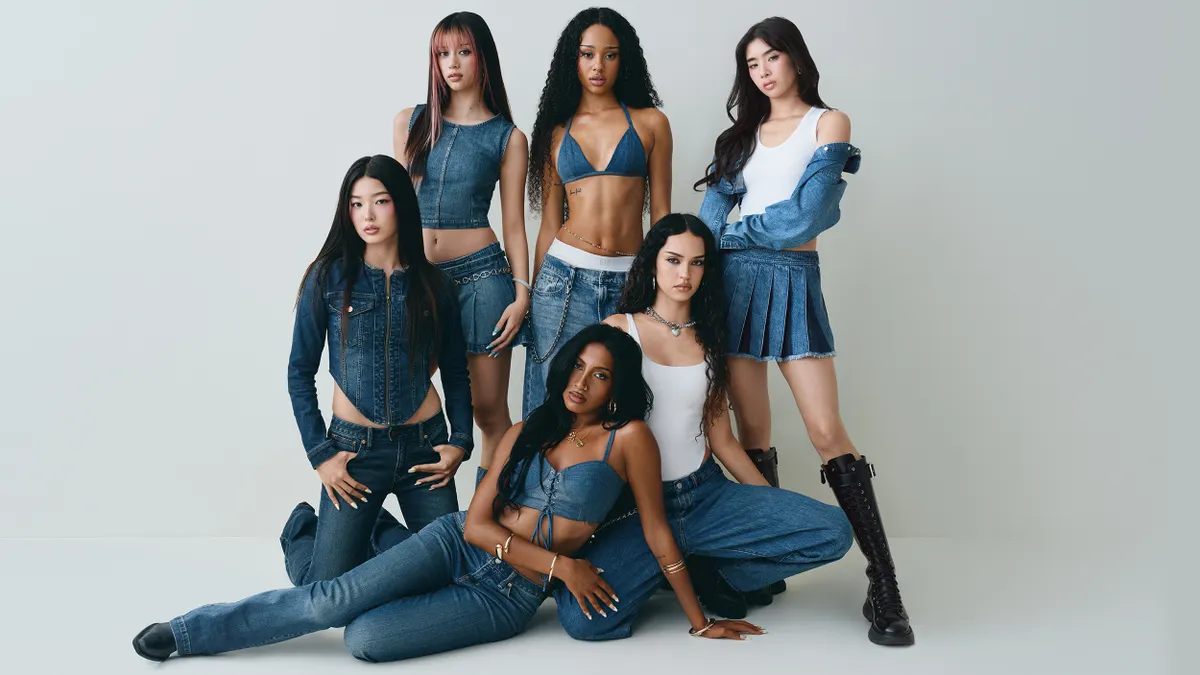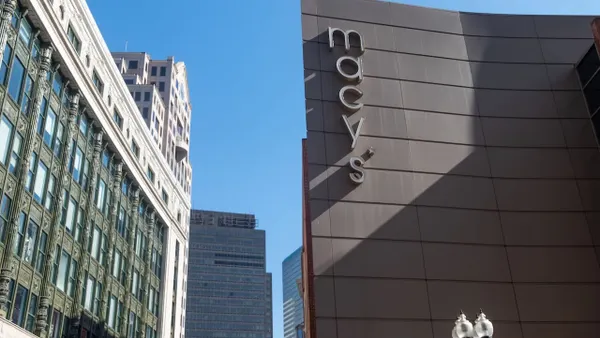Navigating a retail business in today's chaotic environment would be difficult under any circumstances. But for any retailer working under the weight of a distressed balance sheet, their prospects can become very dark, very quickly.
Things are looking particularly gloomy right now for children’s apparel retailer Gymboree, with recent reports suggesting the company is preparing to file for bankruptcy. In many ways, Gymboree’s woes reflect those of the broader market: declining mall traffic, shifts in consumer spending away from material goods and toward services and experiences, e-commerce’s rapid absorption of market share, and growing competition from fast fashion, off-price and everyone else.
Now add a massive pile of debt to the equation: Gymboree's more than $1 billion of debt — much of it stemming from private equity group Bain Capital’s leveraged buyout of the retailers in 2010 — has turned a sales drought into an existential crisis. With a multimillion dollar payment due June 1 and many hundreds of millions in principal due next year, the company has few options left but to restructure its debt and operations — if its creditors agree to a deal. (Gymboree and Bain did not reply to Retail Dive's requests for comment.)
Gymboree recently appointed a new CEO — Daniel Griesemer, who ran teen apparel retailer Tilly’s for about five years until 2015 — who will almost certainly oversee a company overhaul of some sort, quite possibly a rather painful one. While some experts indicate Gymboree could emerge from bankruptcy as a going concern with a much-diminished retail presence, the outcome will ultimately depend on how much debt forgiveness its lenders agree to as well as how much value its owners, creditors and — most importantly — its customers see in the company going forward.
If Gymboree can’t shed debt and reinvent itself for the current climate, it could face a bleak end to its story in liquidation. But regardless of whether Gymboree retrenches or worse, the harsh reality is that its competitors stand to gain.
‘Difficult traffic and conversion trends'
Just over 40 years-old, children's apparel retailer Gymboree describes itself as making clothes “for every kid and every moment of childhood.” It operates 1,300 stores, largely based in malls and split among three separate brands: its higher-end Janie and Jack stores, its lower-price Crazy 8 stores, and the namesake Gymboree stores and their outlet counterparts. (Some experts believe the Janie and Jack stores, which are more profitable than the others, might expand under a restructuring scenario.)
The company’s presence in the children’s apparel space is “centered on cute, wholesome, age-appropriate fashion featuring head-to-toe outfitting,” Monica Aggarwal, an analyst with credit ratings firm Fitch Ratings, said in a February report emailed to Retail Dive.
Founded by Joan Barnes in 1976, the company began as a play and music center for kids. A decade later, it added a line of specialty clothes. By the time Bain Capital bought and took the company private in 2010 at a premium for $1.8 billion, Gymboree was rapidly expanding, flush with cash and virtually without debt. The story has changed drastically since then: In December of last year, Gymboree reported a net sales decline of 4.6% compared to the prior-year period, a 5% drop in comparable sales and a net loss of $10.9 million.
In January 2017, then-CEO Mark Breitbard, who had come from Gap, announced he would step down amid rumors of a restructuring. Breitbard has since returned to Gap, stepping into the lead role at Banana Republic, which faces troubles of its own; Gymboree brought in Griesemer in May.
During the second quarter of 2017, the retailer’s net sales dropped 6.4% to $356.8 million, comparable sales fell by 5% and it logged a net loss of $324.9 million. The company said in its March Q2 earnings release that it “started experiencing more difficult traffic and conversion trends.” More alarmingly, the company revised down its projected revenue and margin growth, saying, "the sustained difficult performance was not anticipated in previous projections that assumed an improvement in traffic and conversion trends."
Barnes, who is now a consultant for Gymboree Play & Music — which the company sold for $127.5 million in early 2016 — told the San Francisco Business Times in May that the company "lost its way when they started to be everything for everybody."
"[Gymboree] spawned an industry, but with it, spawned competitors..."

Joan Barnes
Founder of Gymboree
"It spawned an industry, but with it, spawned competitors," she told the Business Times. "Rather than stay true to who we were, we started art classes and sports and went into department stores... Eventually a company can either spin that growth well or end up diluting the brand."
Part of the problem is Gymboree’s three store lines — Janie and Jack, Crazy 8 and Gymboree — have essentially started cannibalizing each other while competitors such as Carters and The Children’s Place have been outpacing the company in growth, David Silverman, senior director for retail coverage at Fitch, told Retail Dive in an interview.
Magnifying these issues are the company’s financial obligations. “Internally generated cash flow has to be redirected to interest expense and other fixed obligations, which leaves the company unable to devote capital toward addressing its challenges through updated merchandising, through investing in omnichannel systems, through investing in store remodels appropriately to drive consumer excitement,” Silverman said.
‘Just too much leverage’
With a multi-million dollar interest payment due in June and a nearly $800 million loan coming to maturity next year, Gymboree’s sales slowdown couldn’t have come at a worse time.
Gymboree “is a story of leverage and sluggish earnings,” Reshmi Basu, associate editor at Debtwire, told Retail Dive in an interview. “It’s just too much leverage. It’s a liquidity issue at this point as well. There are so many underperforming locations at this point with Gymboree. … The environment for retail now is just so negative.”
"[Gymboree] is a story of leverage and sluggish earnings. It’s just too much leverage."

Reshmi Basu
Associate editor at Debtwire
Indeed, the company appears all but destined for bankruptcy. Fitch added Gymboree to its “Bonds of Concern” list in January. In April, Bloomberg reported that Gymboree was preparing a Chapter 11 filing ahead of the June interest deadline. The outlet noted in its report that Bain could ultimately turn control of the company over to Gymboree's lenders.
In April, Debtwire reported that “lenders have pushed for management to enter comprehensive restructuring negotiations” since February. The group, representing 75% of the term loan lenders, “fired off a letter to the company, alleging the retailer was operating at or near the zone of insolvency,” according to Debtwire. “But at the time, Gymboree management rejected the request, saying it was premature to commence workout talks.”
Then in May, The Wall Street Journal reported in that the company was planning to close 350 stores — or 25% of its footprint — in bankruptcy, a signal that the company could emerge as a going concern. Debtwire has reported that restructuring is likely to leave Gymboree as an operating retailer. In restructuring, Gymboree will probably wind down its lower-priced Crazy 8 stores and expand its more profitable Janie and Jack Stores and e-commerce channels, Basu said.
'An unsustainable capital structure'
For Gymboree to survive as a retailer — even a smaller one — it will need cash and debt relief. “This operating trajectory is one that cannot be reversed,” Fitch’s Silverman said. “The company is faced with an unsustainable capital structure.”
Gymboree and Bain have not discussed the possibility of restructuring publicly, but most likely, they — together with the retail’s creditors — are taking a hard look at the company’s value and store footprint, trying determine which stores are worth saving and which should be jettisoned.
“You have to figure out what is the base of the business and how much debt it can support — and once they know that, they can figure out how to whack up the rest of the pie."

Joel Levitin
Partner at Cahill Gordon & Reindel
“It does seem that there is some portion of the store pool that should remain open and that they can make [Gymboree] stop losing as much money or even make it profitable if they can pare off some of their lower-performing stores,” Joel Levitin, a partner with Cahill Gordon & Reindel’s bankruptcy practice, said in an interview with Retail Dive. “You have to figure out what is the base of the business and how much debt it can support — and once they know that, they can figure out how to whack up the rest of the pie. They might be far along in those discussions. The goal — if they’re going to do some kind of restructuring — is to have it worked out before [bankruptcy filings], and consensually if at all possible.”
But determining the value of the company, the debt it can support, its cash and investment needs, and the ultimate store footprint is a complex equation with numerous moving variables — not least among them the constantly changing retail environment. Get the calculation wrong, and the company could land right back in a precarious financial position.
Leave too few stores in operation and Gymboree’s owners — which could soon be its current lenders if restructuring leads them to convert their debt holdings to equity — risk creating a new retailer that can’t meet its fixed overhead, Levitin said. Leave too big a debt load on the company and Gymboree could end up back in bankruptcy court with its lenders. Or worse — it could face total closure.
Fates worse than bankruptcy
Debtwire’s Basu compares the likely outcome of a potential Gymboree restructuring to the recent cases of Rue 21 and Payless, both retailers that overextended themselves and reorganized around smaller store footprints. But, she notes, most retail bankruptcies end in liquidation. In fact, Fitch analysts found that out of 30 retail bankruptcies going back more than a decade, half ended in liquidation, as compared to 17% across industries.
"Within retail, we talk about a retailer’s ‘reason to exist.’ They can be easily replaced."

David Silverman
Senior Director for Retail at Fitch Ratings
Fitch’s Silverman sees a bleak future for Gymboree. “Retailers tend to liquidate more often than companies do in other sectors in large part because there aren’t significant assets at a retailer beyond inventory,” he said. “And within retail, we talk about a retailer’s ‘reason to exist.’ They can be easily replaced. If Gymboree were to no longer exist, there’s many other places” where consumers could buy children’s clothes.
There are some options between retail survival and liquidation. Recent history has seen distressed retailers, including Bebe and Eddie Bauer, shutter their stores and try to reinvent themselves as wholesalers, Silverman noted.
But Gymboree might not have the brand appeal to make that leap. “We’re skeptical of Gymboree’s opportunity to reinvent itself as a wholesaler," he said. "Contrast that with J. Crew — we have a different view of the J. Crew Brand. We absolutely see value in that brand name. Nobody’s really talked about Gymboree’s opportunity to generate cash flow from [intellectual property].”
To the victors go the spoils
If Gymboree were to liquidate or shrink significantly, it could present an opportunity for other retailers in the children’s apparel space.
To take an example from another segment of retail, Dick's Sporting Goods has enjoyed a dominant position in the sporting goods market after rival Sports Authority was liquidated. Not only did Dick’s help itself to Sports Authority’s intellectual property and more than 30 store leases, but it has beaten analyst expectations in recent quarters as sales have grown rapidly in the wake of Sports Authority's demise.
Plenty of competitors exist that can scoop up Gymboree’s lost sales if it closes a substantial chunk of stores or even liquidates. Some are in much better shape than Gymboree and have the resources to invest in marketing, stores and digital capabilities that will make them even harder to compete with.
The Children’s Place has already eaten away at Gymboree's business during the latter company’s distress, which likely helped boost The Children’s Place’s first quarter comparable sales to 6%, Morgan Stanley analyst Jay Sole said in a May 22 note. Compare that to Gymboree’s dismal 5% decrease in comparable sales from its most recent earnings report.
With 800 stores that executives of The Children’s Place have identified as overlapping with Gymboree stores, the company is perhaps best positioned to capture Gymboree’s market share should it shutter hundreds of stores. “There is a lot of market share coming up for grabs when Gymboree closes these stores,” Susan Anderson, analyst and senior vice president at FBR & Co., said in an interview with Retail Dive. “I think [The Children’s Place] will probably see the benefit. … Obviously, Gymboree shutting down stores is going to help everyone else.”
The children’s apparel market is healthier than the teen or other specialty apparel markets, Anderson said, in part because parents need to continually buy clothes for growing children and can’t easily postpone purchases in economic downtimes. The industry has also already gone through a period of store consolidation and “rationalization.”
But with Gymboree poised to close potentially hundreds of stores — or more — that period may not be over just yet.







